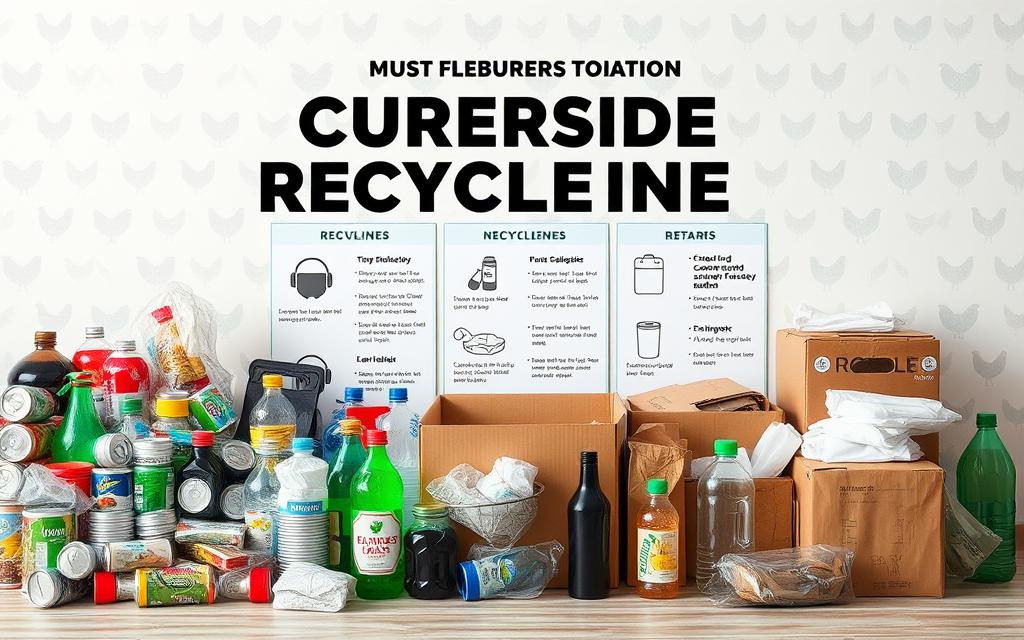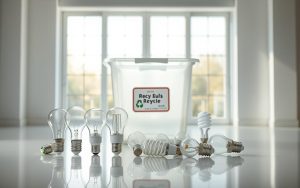Many homeowners and gardeners rely on this versatile material for fencing and plant protection. With growing sustainability concerns, questions about its disposal have become more common. The process, however, isn’t straightforward due to its unique composition.
Municipal programs, like those in Massachusetts, often face challenges with such items. Facilities like Republic Services and Covanta struggle to process mixed materials efficiently. This makes curbside recycling a less viable option in many areas.
Fortunately, eco-friendly alternatives exist. Proper preparation and adherence to local guidelines can make a significant difference. Understanding the specifics of recycling this material ensures responsible waste management.
For accurate information, always check with your local recycling center. Their guidelines will help you make informed decisions about disposal methods.
Understanding the Recyclability of Chicken Wire
Farmers and DIY enthusiasts often turn to chicken wire for its versatility. This material combines galvanized steel with plastic or PVC coatings, making it durable yet challenging to process in recycling systems.
What is Chicken Wire Made Of?
Chicken wire primarily consists of galvanized steel, which is recyclable on its own. However, the addition of plastic or PVC coatings complicates the process. These coatings act as contaminants, making it difficult for facilities to separate the materials effectively.
Why Chicken Wire is Challenging to Recycle
Recycling facilities, like Covanta Haverhill, face significant hurdles with mixed-material items. Automated systems struggle to sort small wire mesh, and plastic coatings can contaminate metal streams. This leads to rejection of such waste in many programs.
In Massachusetts, the DEP enforces strict guidelines for material separation. Metals must be free from contaminants to qualify for recycling. This requirement further limits the recyclability of coated chicken wire.
| Material | Recyclability | Challenges |
|---|---|---|
| Galvanized Steel | Yes | Requires separation from coatings |
| Plastic/PVC Coatings | No | Contaminates metal streams |
Compared to single-stream recyclables accepted in Falmouth and Salem, chicken wire poses unique challenges. Understanding these limitations helps in making informed decisions about disposal methods.
Curbside Recycling Guidelines for Chicken Wire
Proper disposal of materials like chicken wire requires understanding local curbside recycling rules. These programs have specific requirements to ensure efficient processing. Homeowners must follow guidelines to avoid contamination and rejection.

What to Know About Curbside Recycling Programs
Republic Services, a major provider in Massachusetts, enforces strict rules for curbside recycling. Items must be placed at the curb by 7 AM on collection days. Automated trucks require carts to face the street with arrows pointing outward.
Weight limits are also enforced. Each cart must not exceed 50 pounds. Overloaded carts may be left behind, delaying disposal. Always check local guidelines, such as those in Andover, Salem, and Falmouth, for specifics.
“Proper cart placement and weight compliance are essential for efficient recycling.”
How to Prepare Chicken Wire for Recycling
Preparing chicken wire for curbside recycling involves several steps. First, cut the material into manageable pieces. Smaller sections ensure compatibility with automated sorting systems.
Remove any plastic or PVC coatings if possible. These contaminants can disrupt recycling processes. Refer to the Recycling and Trash Collection Guide PDF for detailed instructions.
Be mindful of collection schedules. Weekly trash pickup contrasts with bi-weekly recycling. Plan accordingly to avoid missed pickups.
| Preparation Step | Details |
|---|---|
| Cutting | Reduce size to meet program requirements |
| Removing Coatings | Separate plastic or PVC from metal |
| Cart Placement | Ensure arrows face the street |
Finally, avoid placing carts under snowbanks. Snow burial can lead to missed collections, especially in winter months. Follow Andover guidelines to prevent delays.
Eco-Friendly Disposal Options for Chicken Wire
Finding sustainable ways to dispose of materials like chicken wire can be a challenge for many residents. While curbside programs may not always accept it, alternative solutions exist. These options ensure responsible waste management while reducing environmental impact.
Alternative Recycling Facilities
For those unable to use curbside services, specialized facilities offer a solution. Scrap metal recycling centers, such as Covanta Haverhill, accept materials like chicken wire for a fee. Residents should check local guidelines, as fees and requirements vary.
Household Hazardous Waste (HHW) collection events, like those in Andover, handle coated wires safely. These events follow strict protocols to ensure proper disposal. Always verify details using tools like Salem’s Recyclopedia.
Unlike plastic bags, which are often prohibited in recycling programs, metals like galvanized steel are more widely accepted. This makes facilities a viable option for residents seeking eco-friendly disposal.
Creative Reuse Ideas for Chicken Wire
Repurposing materials can be both sustainable and rewarding. Chicken wire can be transformed into garden sculptures, compost bins, or craft projects. These creative uses extend the material’s life while reducing waste.
Donating to schools or local artists is another great option. Many organizations welcome such materials for educational or artistic purposes. This not only supports the community but also promotes recycling.
By exploring these alternatives, residents can contribute to a greener future. Whether through recycling facilities or creative reuse, every effort counts in reducing environmental impact.
Conclusion
Disposing of materials like chicken wire responsibly requires understanding local guidelines and exploring alternatives. Most curbside programs reject these items due to their mixed composition. However, scrap metal facilities and creative reuse offer viable solutions.
Always check municipal resources, such as Salem’s Recyclopedia, for accurate information. Remember, plastic bags are often prohibited in recycling streams, so avoid including them. By choosing eco-friendly options, you can reduce waste and contribute to sustainability.
Share your innovative upcycling projects with the community. Whether crafting garden art or donating to schools, every effort counts. Together, we can make a difference in managing these items responsibly.







